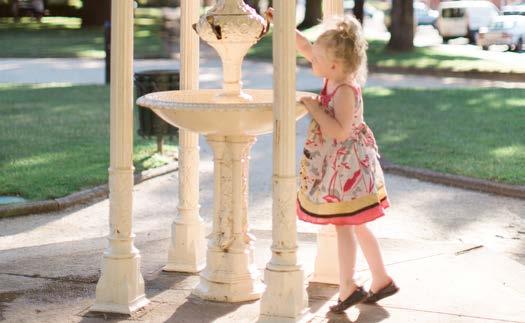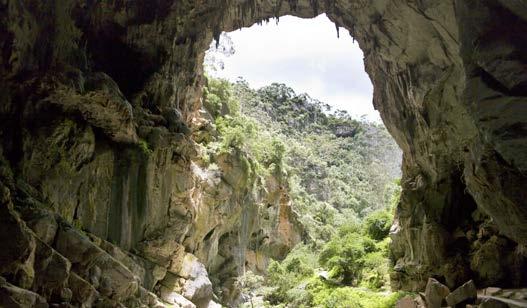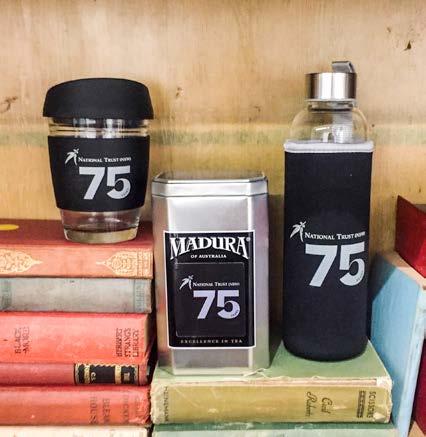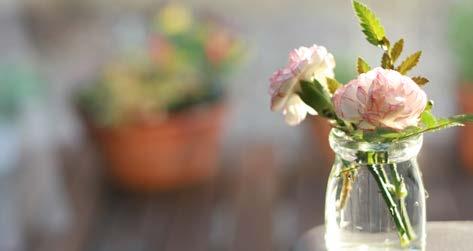
5 minute read
From the CEO
From the Chief Executive Officer
BY DEBBIE MILLS
Dear Members, I often use the phrase ‘it’s not a sprint, it’s a marathon’ as a mantra. It’s important for leaders to have a healthy stockpile of inspiration at hand to maintain focus on the ultimate vision for an organisation. It’s safe to say that the National Trust is an endurance runner, after standing as the guardian of our heritage in New South Wales for 75 years.
National Trust (NSW) President, Neil Wykes, highlighted at the start of this magazine the importance of our advocacy. So much of what we stand for at the National Trust is about endurance: sustaining the memories, history, value and significance of heritage in the natural, built and cultural environment.
We are unrelenting in our advocacy and conservation efforts so that the stories of Australia endure and we are able to continue bringing the heritage of New South Wales to life for future generations. In the next edition of the New South Wales National Trust Magazine, Clive Lucas – current Board Director and former National Trust (NSW) President – will reflect on our advocacy movement in an article titled ‘No Time to Spare’. We know that the marathon is not over yet, and there is still plenty of ground for us to cover in the years to come. We’re running another marathon right now as we face the COVID-19 health emergency across Australia. It has meant that we have cancelled and postponed events and closed our properties. We have also cancelled the Australian Heritage Festival for 2020 and postponed the National Trust Heritage Awards with the support of the Heritage Council of NSW.
We are unrelenting in many things and our care for the community is a constant. This spirit is at the very heart of the National Trust (NSW) and I thank all our staff, our volunteers, our Members, our donors and the community for their continued support of our organisation.
We will endure, and I look forward to seeing you at the wonderful array of 75th Anniversary events we have planned for later this year. Thank you for reading the latest edition of the New South Wales National Trust Magazine and for being an important part of our marathon.
MEMENTO Macquarie Street Sydney: Parliament House, The Mint, Hyde Park Barracks
Can you imagine putting a wrecking ball through these iconic Sydney buildings? Neither could the National Trust. In 1946, the National Trust (NSW) campaigned vociferously to halt plans to demolish what is now the historic precinct of Macquarie Street. You can read a 75-year reflection of our advocacy efforts across New South Wales in the supplement to this edition of the New South Wales National Trust Magazine.

How to subscribe Read more about how we advocate for the protection of our built, industrial, natural and cultural heritage in our eNews and regular Advocacy eUpdate by subscribing at nationaltrust.org.au/enews-nsw
Bargo Beckons
BY BRAD WILSON, MANAGING DIRECTOR, AUSTRALIAN WILDLIFE SANCTUARY
After being almost totally wiped out by recent bushfires, the Australian Wildlife Sanctuary and Bargo Dingo Sanctuary are working together to rebuild and recover. They share a bright vision for continuing their conservation work into the future.
The Australian Wildlife Sanctuary is a state heritage-listed sanctuary in Bargo, in the Southern Tablelands of New South Wales. Covering 93 hectares, it has been home to more than 1,800 native plants, a Field Studies Centre renowned for environmental education and the Bargo Dingo Sanctuary.
In December 2019, the sanctuary was devastated by bushfire, which burnt 90 percent of the property, destroying memorial gardens, vital infrastructure, heritage items, fencing and many buildings, including the Field Studies Centre. The Field Studies Centre comprised five accommodation buildings, a laboratory and classroom. The main Dingo Sanctuary building was also lost, along with all of its history and equipment.
How it Unfolded We were told there was little threat of the Green Wattle Creek bushfire coming close, but in the weeks prior to the fire reaching us we prepared for that possibility – cleaning roofing and gutters and removing green waste around the buildings.
At around 10am on 19 December, the fire broke containment lines and within about an hour, the wind was blowing it towards us. I advised the Dingo Sanctuary to evacuate the dingoes but congested roads made it impossible for volunteers to get in.
By midday we were told it was too late to leave, so we put the most vulnerable dingoes in our cars and moved the others into enclosures where they had previously dug bunkers under their kennels. As the 10-metre-high fire roared into the sanctuary, we drove out through the flames, then became trapped between police roadblocks for hours. A few of us were able to return the following day to put out spot fires. Through the efforts of volunteers, all of the dingoes survived and were unharmed.

Looking to the Future Both sanctuaries will be closed for some time as we work as a united team to restore facilities and infrastructure. Our priorities are to restore power, rebuild fencing and the Dingo Sanctuary, and make the sites safe for animals and visitors.
Community support has been overwhelming and this tragedy has given us the opportunity to realise future business plans earlier than anticipated. With a fresh vision, we will be opening a fully functional cafe, a visitor’s centre with a small heritage museum, a gift shop and a native plant nursery.
The sanctuary will also become home to many endangered native animals as part of our Conservation and Heritage Plan 2020–2030. We are actively respectful of our founder’s aims, and through our WILD ED program will bring education back to the forefront of operations at the sanctuary.
As we rebuild and expand to create a more comprehensive experience for lovers of nature and conservation, our focus remains on protecting our natural environment and cultural heritage, while also educating the community about the importance of taking care of our precious native flora and fauna for future generations.

The Australian Wildlife Sanctuary will reopen in spring 2020. We look forward to welcoming visitors from across New South Wales and Australia, and within the Wollondilly community. Please register your interest in attending our opening event by emailing Brad Wilson at brad@australianwildlifesanctuary.com.au. For updates and more information about the sanctuaries, visit australianwildlifesanctuary.com.au and dingosanctuarybargo.com.au






